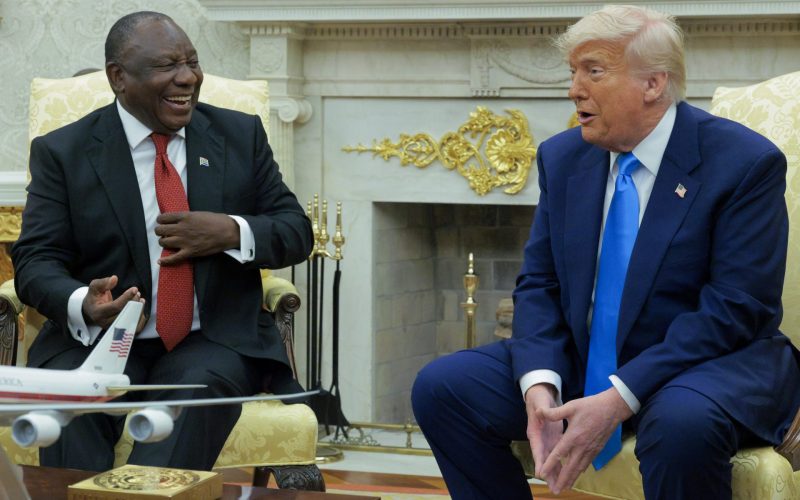That it is available on Cosatu’s website is commendable — I’m all for transparency in policy discourse. But it’s the document’s only redeeming feature.
The vision is premised on the notion that to combat unemployment a “big push” on government’s part is required , ie industrial strategy. Two broad scenarios are proffered: the current “redistributive” stance in which rents from the minerals sector export boom “provide support for the unemployed and underemployed”; and a preferred “industrialisation” stance.
The mining sector is Cosatu’s chief bogeyman: it is (undeniably) responsible for our current economic structure; and Cosatu argues that depending on it to underpin the redistributionist strategy leaves us vulnerable to commodity price shocks.
Furthermore, high commodity prices are, in Cosatu’s view, partly responsible for the strong exchange rate, which, in their view, punishes manufacturing industry, non-mining exports, and job creation. Crucially, the document asserts that with the exception of Australia, Canada, and possibly Chile, minerals-dependent economies have suffered almost ubiquitously from high unemployment, huge inequalities, and poverty.
Interestingly, the document says Cosatu’s executive committee does not favour radical action to reduce minerals dependence, in an apparent accommodation to structural realities.
Cosatu’s alternative is an industrialisation “big push”.
This could have several dimensions: “greater collective ownership”; looser monetary policy implicitly targeting a weaker exchange rate; a “relatively” expansionary fiscal policy; and explicit sector strategies designed to diversify the economy away from mining, hence reorienting manufacturing towards a greater emphasis on the domestic market over production for export.
Agricultural development would require major land reform linked to promotion of agro-processing industries. Unsurprisingly, labour laws would not be weakened. And the core export market would be Africa.
Key instruments for supporting targeted sectors would include tariffs; subordinating trade negotiations to sectoral interests, and “making it easier for unions to initiate safeguard measures”. Sector strategies would “define how every major industry contributes to shared growth, rather than focusing on a few high-tech or labour-intensive activities that cannot transform the economy”. Sources of local inputs would be “identified and expanded … growing these sectors will require an overhaul of the retail sector as well as some tariffs…”. Clothing retailers, beware.
And basic needs would be met by “cutting prices or improving the quality of goods used by the poor”.
This is a planner’s dream.
So you thought the economy functioned rather like a biological organism, growing in multiple directions and unpredictable interconnected paths? Think again.
Enter the mechanical view of the economy, now gathering force in Cosatu and being tested first in the textiles sector.
Clap me in irons and take me away. I have serious problems with this vision.
First, why is it that every Australian I come across extols the virtues of the global commodities boom, and praises the Chinese growth miracle? Because they have embraced their resource riches and recognised that commodity prices are most likely in a sustained secular upswing the likes of which hasn’t been seen for many years.
Sure there will be hiccups, but as they well know, the smart money (increasingly Chinese) is going into servicing that boom. Hence the “redistributive” strategy that Cosatu eschews is likely to prove sustainable provided it is wisely harnessed, which the Accelerated and Shared Growth Initiative of SA purports to do.
Second, Australia and a range of other countries embraced market liberalisation decades ago and have reaped the benefits. These economies, part of a small club of successful globalisers, have embraced international competition and are thriving.
Critical in all cases was the recognition that domestic markets are too small for “middle economies” and that production for global markets would ensure requisite economies of scale.
To achieve this access to cheap inputs is essential, and especially important for latecomers plugging into global supply-chains. Furthermore, Cosatu’s goal of cutting prices or improving quality of goods could best be serviced by opening to imports.
Third, and potentially the most worrying, is the rise in special interest politics this path portends. The textiles saga received blanket media coverage precisely because the politics swirling around it were so compelling, pitting old interests against each other in a struggle to determine market supremacy.
Rather than work with market forces, government chose to go against them. Are we likely to see the same dynamics in other sectors as the state seeks to redefine the architecture of markets throughout the economy? If so, we could be set on a truly revolutionary path.
Fourth, to the extent that this is true, how would the markets receive Cosatu’s macroeconomic stance once it is understood that it forms part of an interventionist industrial strategy seeking to redefine markets wholesale?
Would a decade of hard-won gains and international credibility be squandered at SA’s expense?
If that proves so, Cosatu may ultimately find its prophecy of the “resource curse” is true — not because “mining capital” subverted progressive forces but because our comrades made it so.






